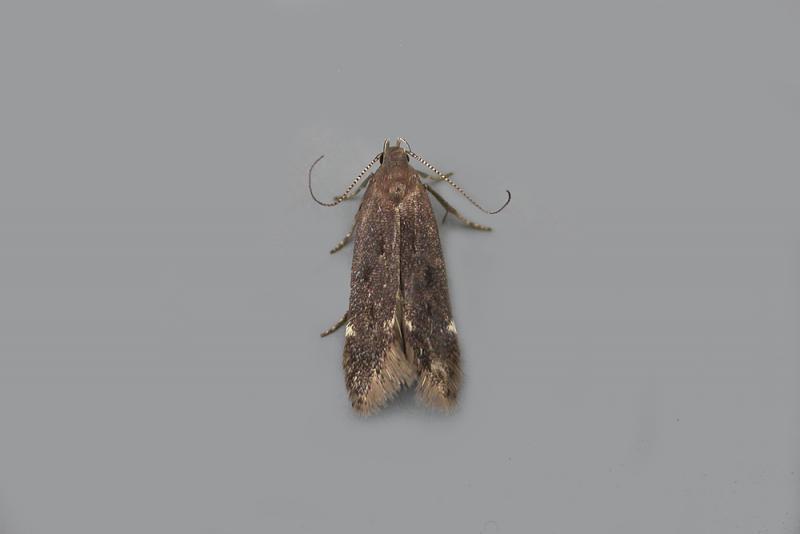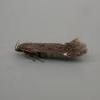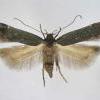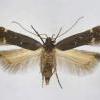35.001 Aproaerema sangiella (Stainton, 1863)
Status and Distribution
Very local, with a scattered distribution in south eastern and northern England, parts of Scotland, with a central and eastern bias, and coastal parts of Ireland. Apparently absent from south west England, Wales, Isle of Man and the Channel Islands. No indication of any significant change in distribution.
A record from Dorset in 1967 has been listed in the county fauna but is, subject to further details, considered unconfirmed.

Provisional map
Habitat
Finding the Moth
Larva: feeds in spun leaves usually at the tips of the stem with a suggested preference for fleshier leaved plants.
Adult: can be swept from amongst the foodplant, has been observed resting on the plant during the day and is attracted to both actinic and mercury vapour light.
Similar Species
When fresh this species has a purplish or bluish tinge to the forewing with some scattered creamy-white to yellowish scales particularly beyond the blackish stigmata. The presence of a creamy-white to yellowish costal patch at three-quarters and similar tornal patch can occasionally extend to form a broken fascia. There is a prominent creamy-white stripe above the eyes and the pale inner surface of the second segment of the labial palps stand out well. There is no hint of any pale lining on the underside of the forewing as in A. taeniolella. It superficially resembles Aproaerema anthyllidella and Eulamprotes immaculatella from which it is readily separated by its larger size and broader wings. It may be necessary to dissect if there is any doubt or if the moth is at all worn.
Single brooded from late May to early September.













